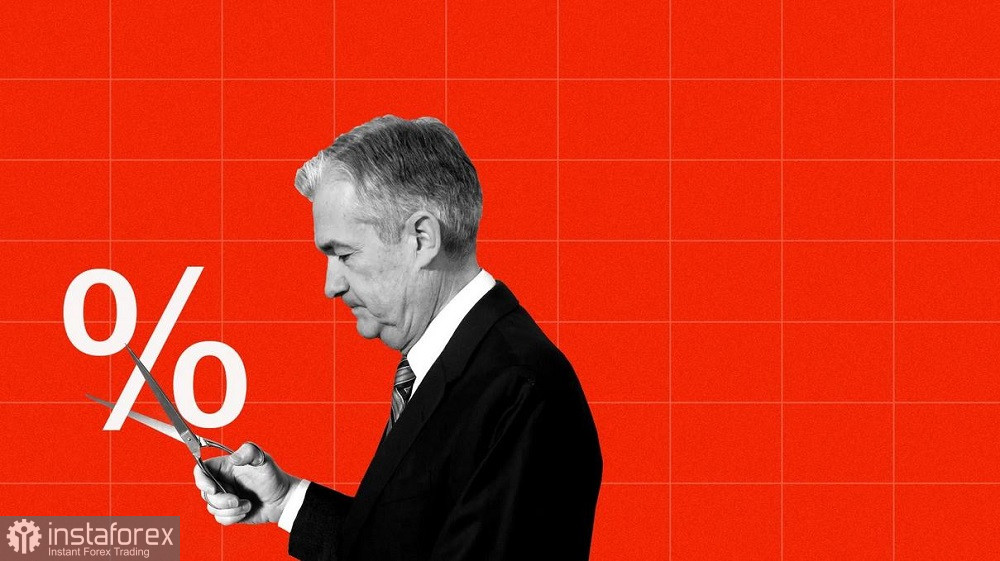The northern trend is on pause. Despite the impulsive price growth observed last week, EUR/USD buyers could not consolidate within the 1.0900 range. Yesterday, the pair attempted another rise, reaching 1.0923 (nearly a four-month high), but sellers took over, pulling the price back to the 1.0800 range.
We will discuss the reasons for this failed blitzkrieg below, but first, it's worth noting that this is not the first attempt to conquer the 1.0900 range. Looking at the MN timeframe, we can see that the pair has been regularly trying to reach this price level since March. In April, EUR/USD buyers even managed to reach 1.1031, but they were defeated as April closed at 1.0666.
In other words, traders have been trying to stay above the 1.0900 target since early spring, but each time they fall back to the 1.0600-1.0800 range. Therefore, the "July precedent" is not a precedent but another attempt in a long series of similar attempts.

Why are EUR/USD buyers losing their positions now? For two main reasons: the rise in anti-risk sentiment and Jerome Powell's indecisiveness. Additionally, traders are hesitant to open long positions ahead of the July ECB meeting, the results of which will be announced on Thursday. The combination of these fundamental factors prevents buyers from confidently consolidating within the 1.0900 range to further test the key resistance level of 1.1000.
Yesterday, Fed Chair Jerome Powell spoke at the Economic Club of Washington, commenting on the latest inflation releases. All his previous speeches (at the Sintra Forum and in Congress) were before the publication of key reports that showed a slowdown in CPI and a rise in PPI. After these releases, the market independently concluded that the Fed would definitely lower the interest rate in September (with the probability of this scenario rising to 95%) and might lower it again at the last meeting of the year, in December.
However, Jerome Powell disappointed supporters of such a "dovish" scenario—he refused to confirm even the September rate cut. He stated that the latest macroeconomic data "somewhat" strengthens the confidence that inflation is moving towards the target level. This confidence, Powell noted, suggests that the Fed will soon start lowering the interest rate.
In other words, the Fed Chair did not rule out monetary policy easing this year but did not announce a rate cut at the beginning of autumn. When directly asked about September's prospects, he responded that the Fed would make decisions from meeting to meeting, based on incoming data and overall risks.
"I'm not ready to give any signals about any particular upcoming meeting," Powell said.
Naturally, the question of another rate cut (after a possible one in September) was sidelined.
It should be noted that Powell's words do not rule out a rate cut in September. Moreover, he acknowledged that waiting for inflation to return directly to the 2% target level would mean "too long a refusal to ease policy."
Therefore, September's prospects remain relevant. According to the CME FedWatch tool, the probability of a 25 basis point rate cut is currently 88%. The probability of a 50 basis point cut is 12%.
At the same time, Powell's cautious rhetoric raised doubts about a December rate cut. Despite the market actively discussing this topic, following the principle of "appetite comes with eating."
Will Powell reverse the EUR/USD pair? No. He tried to maintain balance in his rhetoric, and it seems he succeeded. On the one hand, he refused to "explicitly" announce a rate cut in September, sowing some doubts among traders, but on the other hand, he indicated that the likelihood of policy easing in the near future is high, as inflation is moving in the right direction.
Thus, the Fed Chair halted the price's upward movement but did not reverse the trend. The pair is on pause, awaiting the next catalysts. Upcoming are the US retail sales data, the ECB meeting, and speeches from several Fed representatives (Adriana Kugler, Christopher Waller, Thomas Barkin, John Williams, Raphael Bostic, and Michelle Bowman).
From a technical standpoint, the pair on the daily chart is between the middle and upper lines of the Bollinger Bands indicator, and above all lines of the Ichimoku indicator (including above the Kumo cloud), which shows a bullish "Parade of Lines" signal. The pair maintains the potential for another rise to the upper line of the Bollinger Bands on D1, at 1.0930. Overcoming this target will open the way to the next resistance level at 1.0970 (upper line of the Bollinger Bands on W1) and the psychologically important price barrier of 1.1000.





















